After years of nationwide feedback from contractors and customers, we’ve curated our Artificial Turf Supply Detailed Installation Guide with a wealth of knowledge to ensure you have all the information you need to achieve a flawless-looking and successful artificial grass installation.
From professional installs to learning how to self-install your turf product, we’re addressing all installation challenges and offering the latest tips and techniques to save you time and money.
Whether you’re a seasoned DIY enthusiast or a first-time installer, we aim to empower you with the expertise needed to transform your backyard haven.
Join us as we guide you through installing artificial grass, and get ready to enjoy a low-maintenance and vibrant lawn that will stand the test of time.
Step 1: Planning Your Turf Project
Transforming your outdoor space with artificial turf is a project within reach for most DIY enthusiasts. This guide will lead you through a streamlined process, from initial planning to the final touches of laying down your artificial grass.
Proper planning is vital to a smooth installation. Here’s what to consider before diving in:
| Step | Details |
|---|---|
| Project Size | Typically, areas under 1,500 square feet can be completed within 2-3 days. |
| Weather Conditions | Installation should only be carried out in temperatures above 50 degrees Fahrenheit. |
| Tools Required | Various tools are needed; power tools can make the process more efficient, though they are not mandatory. |
| Turf Dimensions | Standard rolls come in 15 feet widths. Calculate the area width x length based on 15-foot widths, allowing extra for seaming and trimming. |
| Seams | Aim to have as few seams as possible for a seamless, natural appearance. |
When planning your DIY artificial turf installation, consider the project’s scale—areas under 1,500 square feet typically take 2 to 3 days to complete.
Optimal installation conditions require temperatures above 50 degrees Fahrenheit. Ensure you have all the necessary tools, noting that while power tools aren’t crucial, they can make the process smoother.
Remember that turf rolls are 15 feet wide, so plan your area accordingly and allow extra turf for seaming and trimming. Minimizing seams will enhance the natural look of the turf.
Learn more: Artificial Grass Planning & Design
Step 2: Prepare the Ground for Installation
- Remove Vegetation: Use a sod cutter, hoe, or shovel.
- Clear the Area: Eliminate large rocks or roots.
- Weed Barrier: Lay down if needed and secure with sod staples.
- Gopher Wire: Install if using.
- Base Material: Mix 3/4″ down to 1/4″ crushed drain rock for solid drainage.
To prepare the ground, start by removing any existing vegetation and clearing the area of debris. If necessary, install a weed barrier to prevent future growth, securing it in place with sod staples.
Lay down gopher wire for enhanced protection, particularly in gopher-prone areas. Finally, spread a base material that facilitates good drainage, typically a mix of 3/4″ to 1/4″ crushed drain rock.
Learn more: Ground Preparation for Artificial Grass
Step 3: Installing Artificial Turf
- Roll Out Turf: Do this over a clean, flat surface.
- Seaming: Ensure the turf pieces have the blades in the same direction and seam carefully.
- Trimming: Custom-fit your turf to the space.
- Infill Application: Use antimicrobial-coated sand for a natural look and odor prevention.
- Brooming: Brush the turf to stand up the blades and settle the infill.
First, roll out the turf on a clean and flat surface. When seaming multiple rolls, ensure the blades of turf run in the same direction for uniformity.
Trim the turf to fit your designated area precisely.
Apply a layer of antimicrobial-coated sand as an infill to help the grass stand up and to prevent odors.
Finally, use a broom or similar tool to brush the blades upright and ensure the infill settles appropriately, giving your new lawn a lush, natural appearance.
Learn more: Detailed Turf Installation Tutorial
Step 4: Adding Infill
Infill is essential for artificial grass installations. It helps support the blades, increase durability, and mimic the feel of natural grass. Infill can be either acrylic-coated sand with antimicrobial properties or crumb rubber. It’s applied between the blades, improving stability and longevity in high-traffic areas. For lighter turf (under 60 oz.), use 3 pounds of infill per square foot; for heavier turf (over 60 oz.), apply 2 pounds per square foot.
Artificial Turf Supply recommends Envirofill, a premium green-colored sand that controls pet odors, mold, and bacteria while keeping turf cooler. Applying infill evenly is key—use a spreader and power broom to distribute it properly across the turf, and brush the blades for an upright appearance. For small or tight areas, hand spreading and brushing will ensure a consistent finish.
Ensure the turf and infill are dry during installation to prevent clumping. Finally, rinse the entire area evenly to settle the infill and ensure a professional look.
Learn more: Adding Infill to Artificial Grass
Frequently Asked Questions
Making the decision to install artificial turf can be a big one, whether it’s for your home or business. It’s understandable to have questions and concerns about the installation process, and in this section, we’ll take a closer look at some of the most frequently asked questions about installing artificial turf.
How much does artificial turf cost?
The cost of artificial turf can vary depending on a variety of factors, such as the quality of the turf, the brand, and the size of your lawn or project. On average, you can expect to pay between $5 and $20 per square foot for the turf alone. However, keep in mind that other costs, such as infill, edging, and installation, can add to the total cost. If you decide to hire a professional installer, the cost will likely be higher.
How much does it cost to install turf?
The cost of installing artificial turf can also vary depending on several factors, including the size and complexity of the project, the quality of the turf, and whether you hire a professional or do it yourself. You can expect to pay between $2 and $8 per square foot for installation. However, remember that this is just an estimate, and your actual cost may be higher or lower depending on your specific project.
To provide an estimate, we have created a table below that outlines the estimated cost of a project for different square footage ranges.
| Square Footage | Estimated Cost | Price per Square Foot |
|---|---|---|
| 500 | $3,000 – $5,500 | $6.00 – $11.00 |
| 1,000 | $6,000 – $9,000 | $6.00 – $9.00 |
| 1,500 | $9,000 – $12,000 | $6.00 – $8.00 |
| 2,000 | $12,000 – $15,000 | $6.00 – $7.50 |
| 2,500 | $15,000 – $18,000 | $6.00 – $7.20 |
Remember that the cost can vary based on other factors, such as site-specific considerations and materials used.
How long does it take to install artificial turf?
The time it takes to install artificial turf can vary depending on several factors, such as the size of the area, the complexity of the project, and the installer’s level of experience. If you decide to install the turf yourself, you can expect the process to take anywhere from a few days to a week, depending on the size of the area and the amount of preparation needed.
Can I install artificial turf on a slope or hill?
You can install artificial turf on a slope or hill, but it requires additional preparation and installation techniques. The installation process for a sloped area will be more complex, as the turf must be anchored and secured correctly to prevent it from sliding or shifting. To ensure a successful installation, we recommend hiring a professional installer with experience working on sloped areas.
How often do I need to maintain my artificial turf?
One of the main benefits of artificial turf is that it requires minimal maintenance compared to natural grass. However, regular maintenance is still necessary to keep the turf looking its best and to ensure its longevity. We recommend sweeping or using a leaf blower to remove debris, hosing down the turf to remove dirt and dust, and brushing the blades to keep them upright. Depending on the amount of foot traffic, you may also need to add additional infill or groom the turf to keep it looking fresh.
Can I install artificial turf on top of concrete or asphalt?
Yes, you can install artificial turf on top of concrete or asphalt. However, you will need to ensure the surface is clean, level, and free of any cracks or damage. You may also need to add a layer of padding or cushioning to provide additional shock absorption and drainage. It’s important to note that installing turf on a hard surface may require additional installation techniques, such as using adhesive or stakes to secure the turf. We recommend consulting with a professional installer to ensure a successful installation.
ATS Disclosure:
This guide is for individuals, contractors, and turf installers who wish to install their Do-It-Yourself artificial grass turf project. Artificial Turf Supply makes no representations or warranties regarding the following installation information. This guide is a best effort to install artificial grass yourself and is not intended for other specialized artificial turfs. Not all results are guaranteed.


